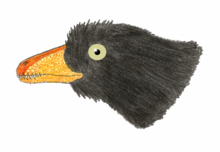Introduction
In the world of paleontology, new discoveries are always exciting. On May 3rd, 2013, a remarkable find took place in China – the discovery of a new species of theropod dinosaur named Aorun zhaoi. This dinosaur, dating back approximately 161 million years to the Late Jurassic period, has provided scientists with valuable insights into the diversity and evolution of predatory dinosaurs.
The Discovery of Aorun Zhaoi
Aorun zhaoi was discovered in China, specifically in the Shishugou Formation of the Junggar Basin in Xinjiang. The fossilized remains of this dinosaur were found by a team of paleontologists from the George Washington University and the University of Chicago.
The discovery of Aorun zhaoi was a significant event in the field of paleontology. It shed light on the existence of a previously unknown species of theropod dinosaur, expanding our understanding of the ancient ecosystems in which these creatures once roamed.
The Significance of Aorun Zhaoi
Aorun zhaoi belongs to the theropod group of dinosaurs, which includes famous predators like Tyrannosaurus rex and Velociraptor. This new species provides valuable insights into the diversity and evolution of these formidable creatures.
The Late Jurassic period, during which Aorun zhaoi lived, was a time of great change and evolution in the dinosaur world. The discovery of this new species helps fill gaps in our knowledge of this period and provides a clearer picture of the ancient ecosystems that existed millions of years ago.
One of the fascinating aspects of Aorun zhaoi is its name. The dinosaur is named after Ao Run, the Dragon King of the West Sea from Chinese mythology. This choice of name reflects the cultural significance of the discovery and highlights the connection between paleontology and the rich history and mythology of China.
Scientific Analysis and Findings
Once the remains of Aorun zhaoi were discovered, the paleontologists embarked on a detailed scientific analysis to learn more about this new species. Through careful examination of the fossilized bones, they were able to determine various characteristics and features of the dinosaur.
Based on their findings, the scientists concluded that Aorun zhaoi was a small theropod dinosaur, measuring approximately 1.2 meters in length. It had sharp teeth and long, slender legs, indicating its predatory nature. The analysis also revealed that this dinosaur belonged to the coelurosaurian subgroup of theropods.
Furthermore, the examination of the fossilized bones provided evidence of the presence of feathers. This discovery supports the theory that many theropod dinosaurs, including Aorun zhaoi, were likely covered in feathers, similar to modern birds.
Implications for Paleontology
The discovery of Aorun zhaoi has significant implications for the field of paleontology. It adds to our understanding of the diversity of theropod dinosaurs during the Late Jurassic period and provides valuable information about their evolutionary traits.
By studying the fossilized remains of Aorun zhaoi, scientists can gain insights into the anatomical features and behaviors of this dinosaur. This knowledge contributes to our broader understanding of the ancient ecosystems and the interactions between different species that existed millions of years ago.
Additionally, the presence of feathers on Aorun zhaoi raises intriguing questions about the evolution of feathers in dinosaurs. This discovery supports the hypothesis that feathers may have originated as insulation before being co-opted for flight in certain dinosaur lineages.
Conclusion
The discovery of Aorun zhaoi in China on May 3rd, 2013, marked an important milestone in the field of paleontology. This new species of theropod dinosaur provided valuable insights into the diversity and evolution of predatory dinosaurs during the Late Jurassic period.
By studying the fossilized remains of Aorun zhaoi, scientists have gained a deeper understanding of the ancient ecosystems and the characteristics of these remarkable creatures. The cultural significance of this discovery, reflected in the dinosaur’s name, highlights the intersection of paleontology and mythology.
The findings from the analysis of Aorun zhaoi have expanded our knowledge of theropod dinosaurs and their evolutionary traits. This discovery will continue to inspire further research and exploration, as we strive to unlock the secrets of our planet’s prehistoric past.

